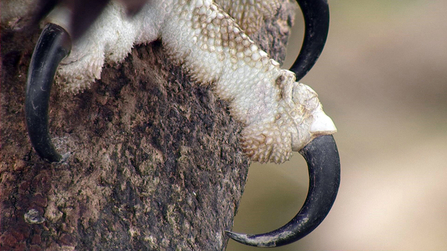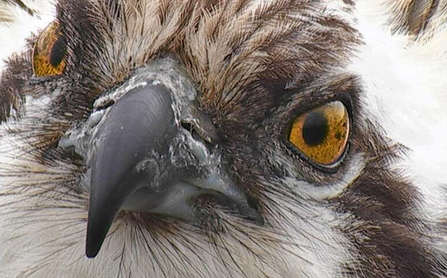Ospreys have been around for a long, long time. They have hardly changed in at least 15 million years and the last time when the osprey had a common avian ancestor is a lot further back in time still. It is a remarkable testament to the success of this fish-eating raptor that the very features that give the osprey such an elegant advantage for their specialised way of hunting have changed little over evolutionary time.
So, what adaptations does the osprey possess that no other bird of prey has? Here are just a few:
Legs and Feet: Ospreys have disproportionally long legs to enable them to lunge for their prey and once a fish is caught, it is carried away torpedo style with the head facing the flight direction for maximum aerodynamic efficiency – no fancy wind tunnels required here. Massive sharp talons grip the fish, while backward-facing hard scales on the legs help prevent the live prey from slithering away. On the bottom of the feet themselves are specialised adaptations called ‘spicules’; the skin is formed into multiple barbs which further help the osprey catch, carry and eat its prey.
'Spicules' evolved milions of years ago and give ospreys an advantage when catching and carrying fish


